Learn some practical tips for process, gear, setup, and some pitfalls to avoid when crafting memorable game music — based on our successful real-world experience working with the game War Robots!
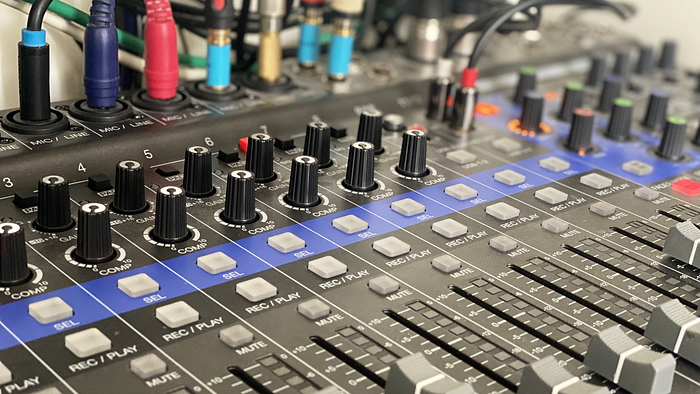
In general, music isn’t the most important consideration for mobile games (except perhaps indie projects or rhythm games, where music is one of the main gameplay elements). However, at Pixonic, we take a different approach. We try to create game music which could easily stand alone as a piece of art — this is the only way it can keep player interest beyond the game. Players could actually begin to buy the music or listen on streaming platforms, and that’s a win-win for everybody.
Hello! My name is Ilya Viktorov, and I’m the Lead Sound Designer at Pixonic, MY.GAMES, where I’m responsible for sound effects and music. Apart from that, I’m working on several musical projects of my own which get millions of plays (you can find those here and here).
In this article, we’ll discuss crafting memorable game music, and in particular, we’ll look at our work on the War Robots soundtrack, our workflow, musical set up, and how “non-typical-shooter” music can be an appealing choice for players.
Starting a bit late
Actually, work on the music for War Robots began around 2016, which is quite late since the game was already 3 years old at that time. The studio initially didn’t have a dedicated person responsible for the sound. They did have outsourced help who created various assets, but they also needed in-house people to implement and develop new sound features.
In fact, in the beginning, there was only a main menu track, which was created by outsourced talent. To be frank, however, this theme didn’t really suit us: it was too long, poorly mixed and sounded pretty muddy. Therefore, we decided to replace it with our own, and at the same time, we also wanted to add several event themes for Christmas and Chinese New Year. (This soon became a tradition, and now exclusive tracks in original styles are usually recorded for Halloween and War Robots anniversaries).
Let’s take a brief aside and look at some examples:
- Our darkwave-style 2021 Anniversary Theme unexpectedly became one of our most popular tracks.
- The 2020 Halloween Event track, “In the Valley of the Dead Robots” was entirely composed and recorded by employees who make music as a hobby. As often occurs, a spontaneous idea became a big project with a music video.
Setting the tone and more details
Returning to our story, when the question of the gameplay music came up, some debate began to break out, and some team members insisted that the game needed intense combat music. But there was some nuance to consider: in War Robots, the sound of battle is already quite intense, since several types of weapons are being fired almost constantly. Further, mobile platforms have significant technical limitations that prevent complex mixing and transparent sound. We tried some simple solutions like volume ducking but it didn’t go well, as they set off too abruptly and completely dampened the music at high intensity combat sounds.
The fact is that mobile platforms strongly compress all audio files, and this significantly affects the sound quality. High frequencies suffer the most — intense music with a lot of percussion will sound dirty and unpleasant. Add constant shooting to the mix and players won’t be able to make heads or tails of it.
We decided to use neutral background music on the stages, unique for each location. This music conveys the mood of the map, but at the same time, it doesn’t clash with the sound of intense shooting, which again, is running almost non-stop throughout an entire game session.
At first there were doubts about how players would like such light music, but the feedback was very positive. Subsequently, we released high-quality versions of these tracks on multiple platforms, which you can check out here: track on Spotify, track on Apple Music. They get a pretty healthy number of plays, too!
Work on the music, as a rule, begins when the map is almost finalized, and is carried out in parallel with the work on the sound.
Background sounds are technically also part of the music, although you can turn this on and off separately.
Previously, it was just a repeating loop of about 15–20 seconds, but then we changed it to a neutral background noise and a container with a set of 7–10 sounds that turn on in a random order and with a random delay. This allowed us to save space and increase variability. The music, like the background sound, is looped into a seamless cycle and starts with a smooth volume fade.
Setting up your setup
Now, let’s share a few words about what I use to work with game music and sounds. While it’s clear that everyone creates their own setup for certain needs, but if you are looking for that “missing something”, it’s worth taking a closer look at this list — each element here is time-tested.
- Adam A7X monitors: for small studios, these monitors offer the best value for your money.
- UAD Apollo Twin audio interface: this needs no introduction. This is a compact, yet very powerful, sound card with high-quality converters and DSP that emulates many legendary devices such as Teletronix and Neve.
- Novation MiniNova: a compact synthesizer for all occasions, which also can be used as a main MIDI-keyboard.
- Korg Minilogue XD: this is an analog polyphonic with FM and wavetable-oscillator. A good way to add analog feeling with modern technologies.
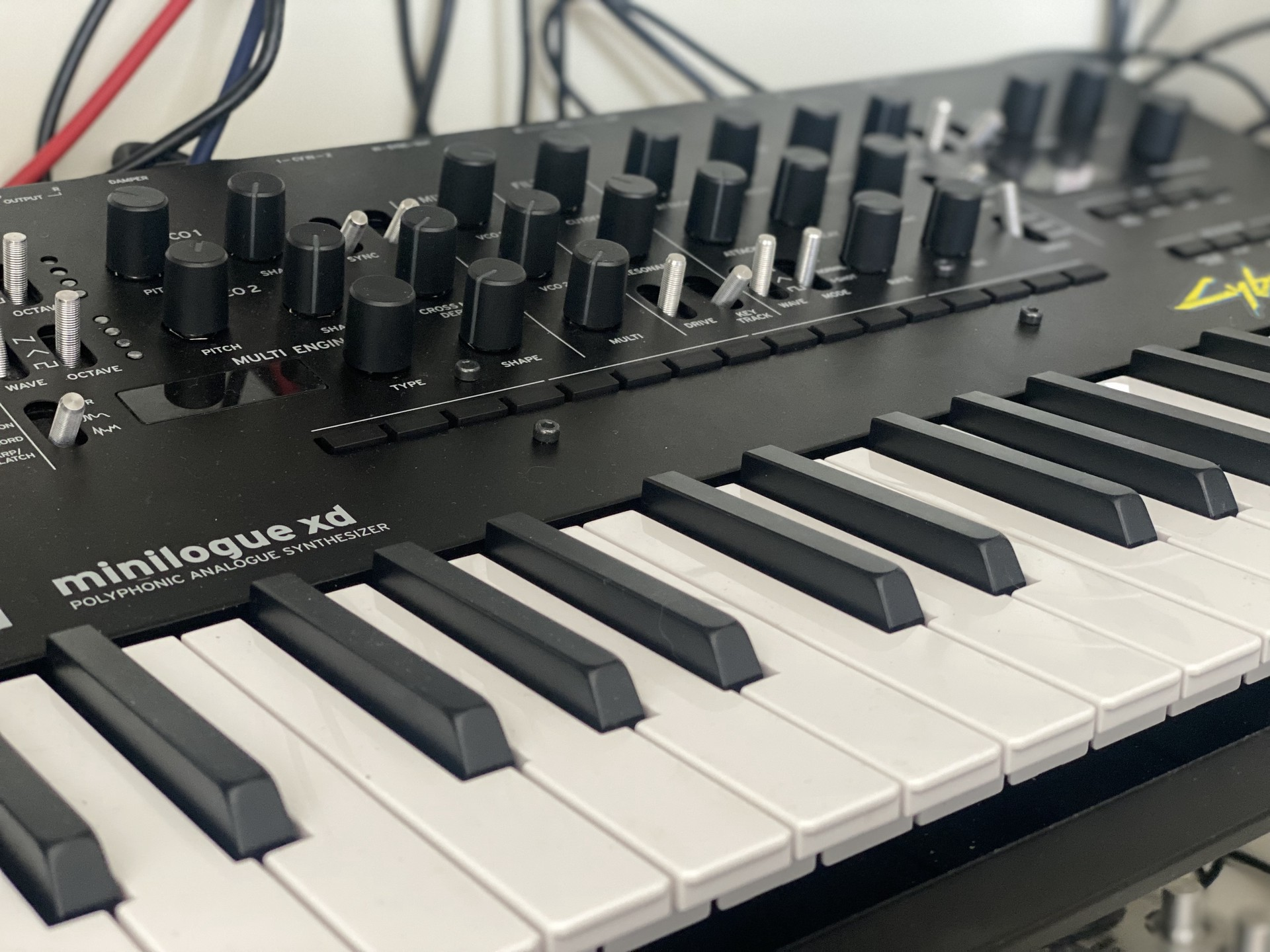
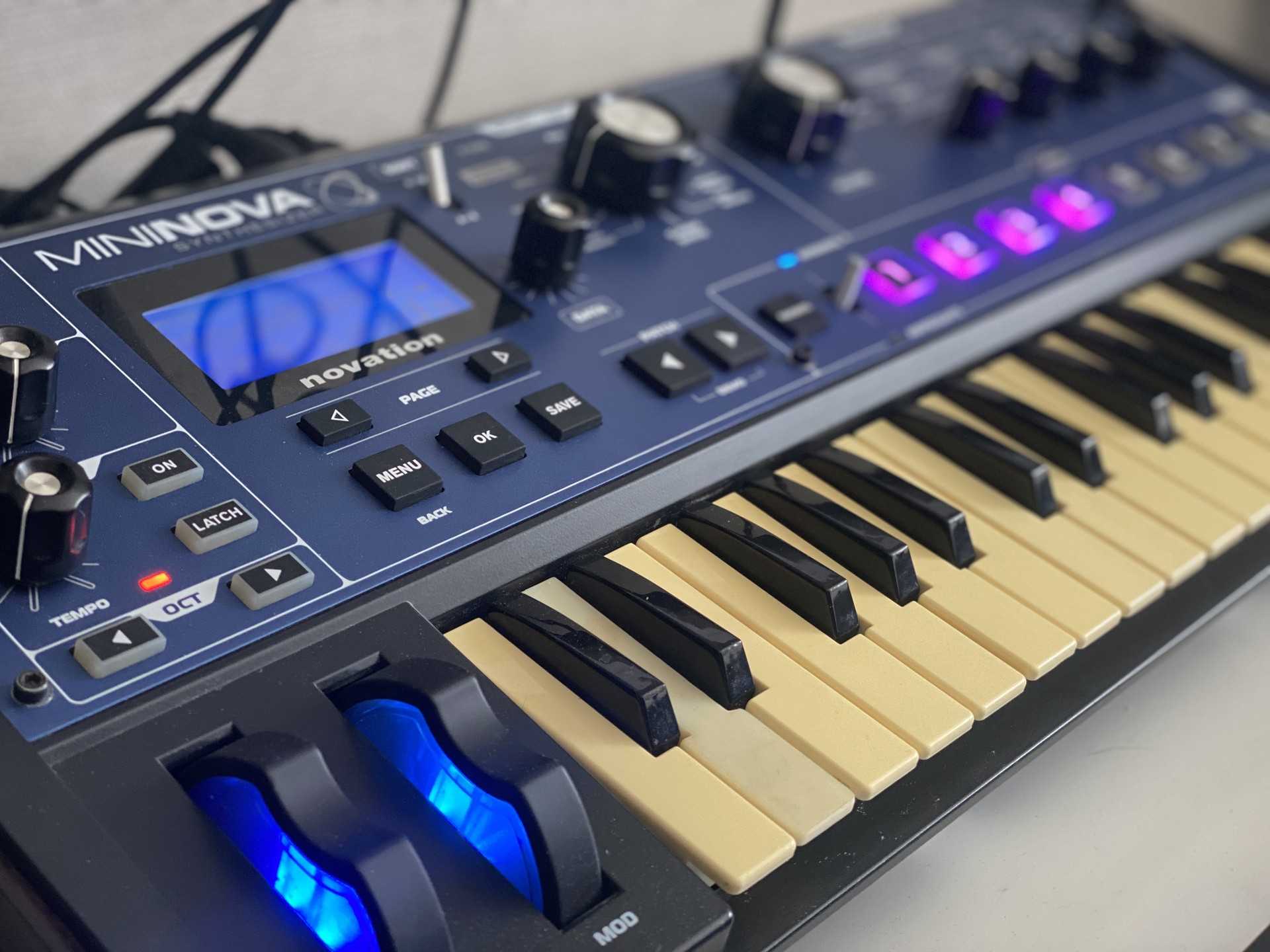
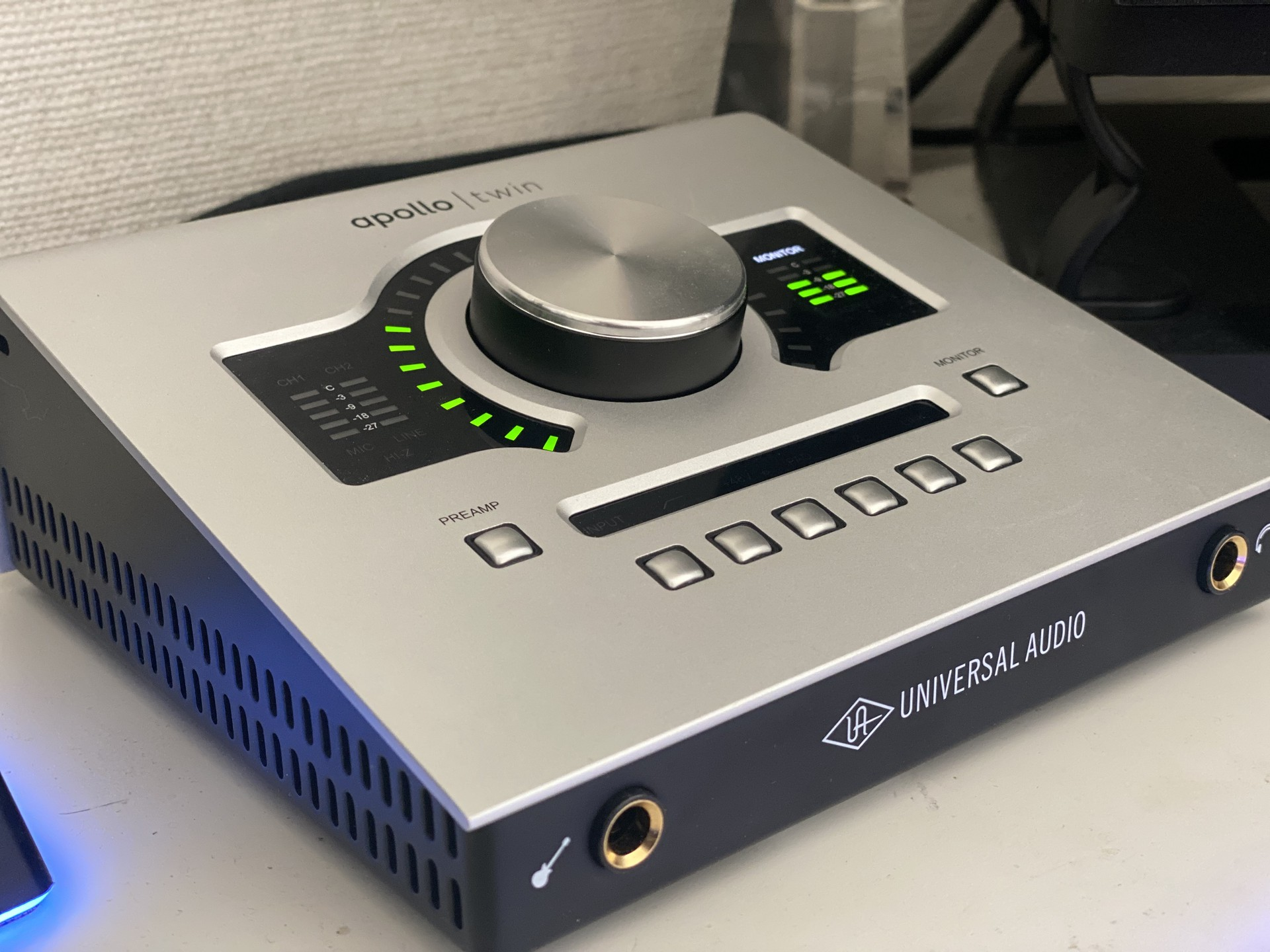
Korg Minilogue XD | Novation Mininova | UAD Apollo Twin
- Access Virus Ti: this is another absolutely versatile synthesizer with pure digital sound. It can also be used as an audio interface.
- The Behringer Model D: a pretty convincing clone of the legendary Minimoog. It does well with bass sounds and classic sci-fi effects in the 70s style.
- Behringer Neutron: this is a semi-modular analog synthesizer for the most unpredictable effects.
- Arturia Keystep: a quality compact keyboard for everyday use. It has a built-in sequencer, arpeggiator and a full set of MIDI and CV ports.

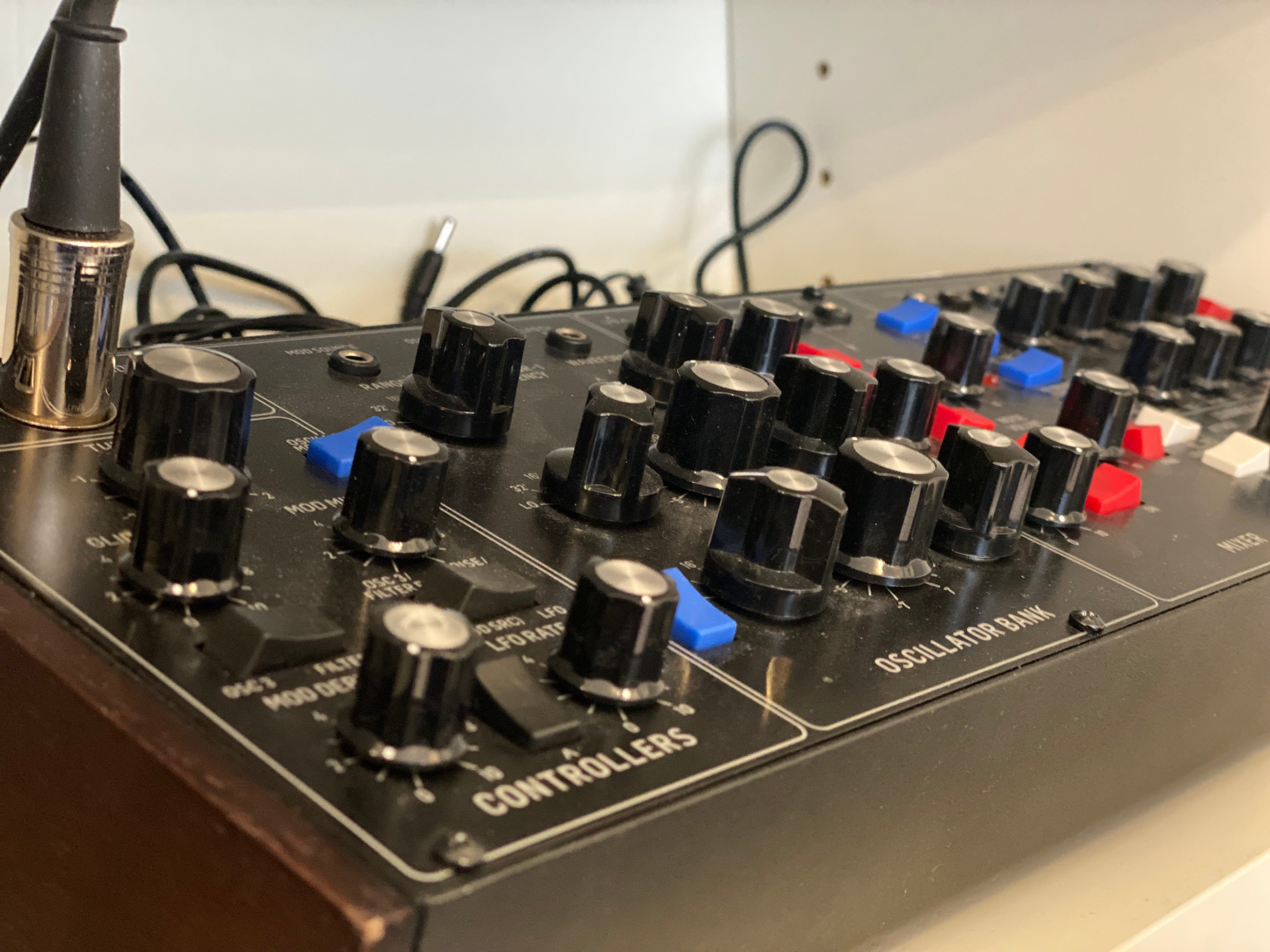
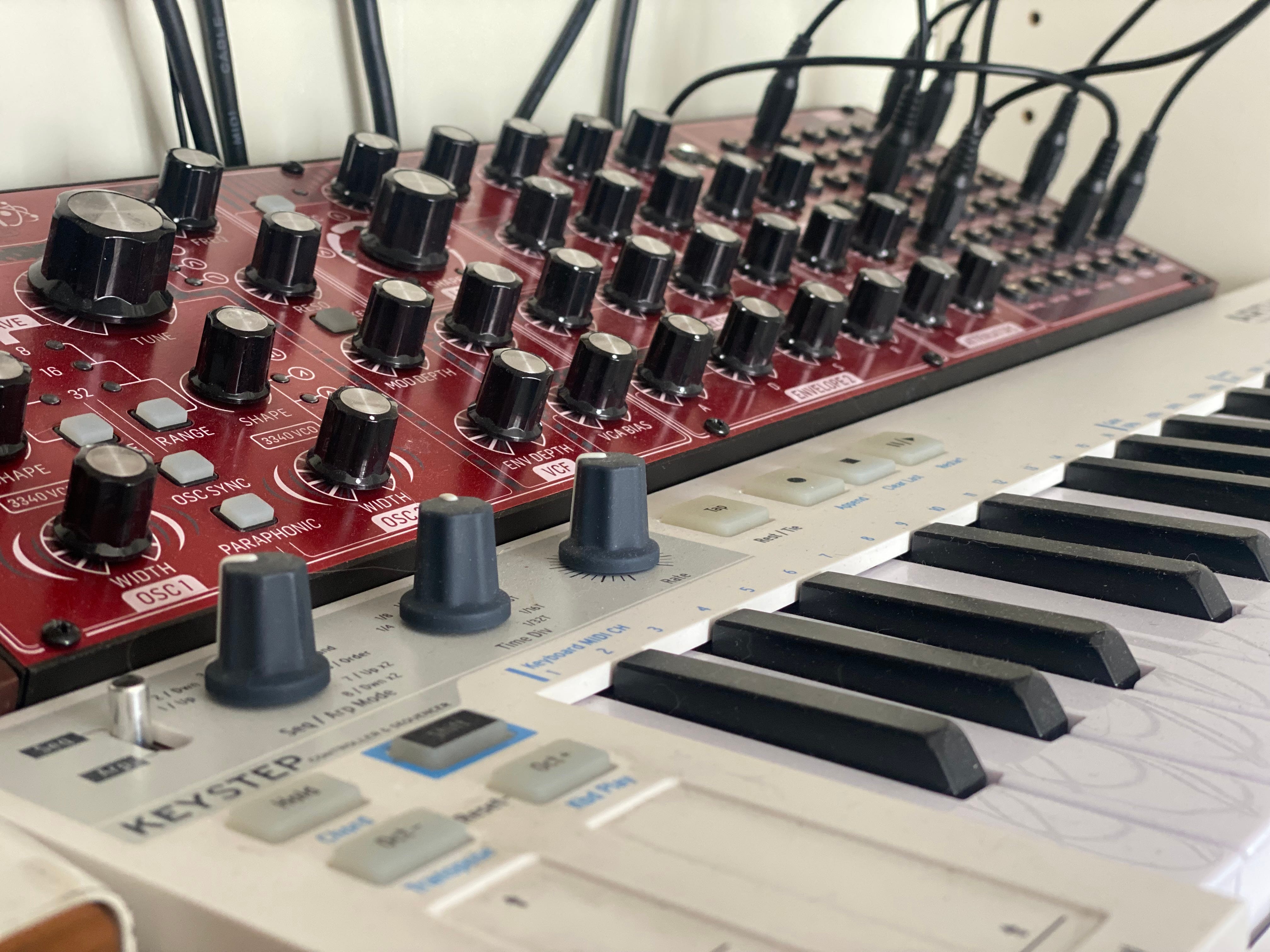
Access Virus Ti Snow | Behringer Model D | Behringer Neutron + Arturia Keystep
- Roland TB-03: a replica of the legendary TB-303, only digital and ten times cheaper.
- Korg Volca Bass/Keys/FM/Sample: these are a set of tiny, but well-performing synthesizers.
- Korg NTS-1: another miniature synthesizer, sold as a DIY-kit, it has available slots for user oscillators and can work as an effects processor.
- Eventide H9: a versatile effects processor with all the legendary Eventide devices on board. It is often used in tandem with the wonderful Strymon Blue Sky reverb, allowing you to turn anything into an ambient sound.
Some others worth mentioning: TC Electronic June-60, TC Electronic Mojo, Zoom MS-70CDR.
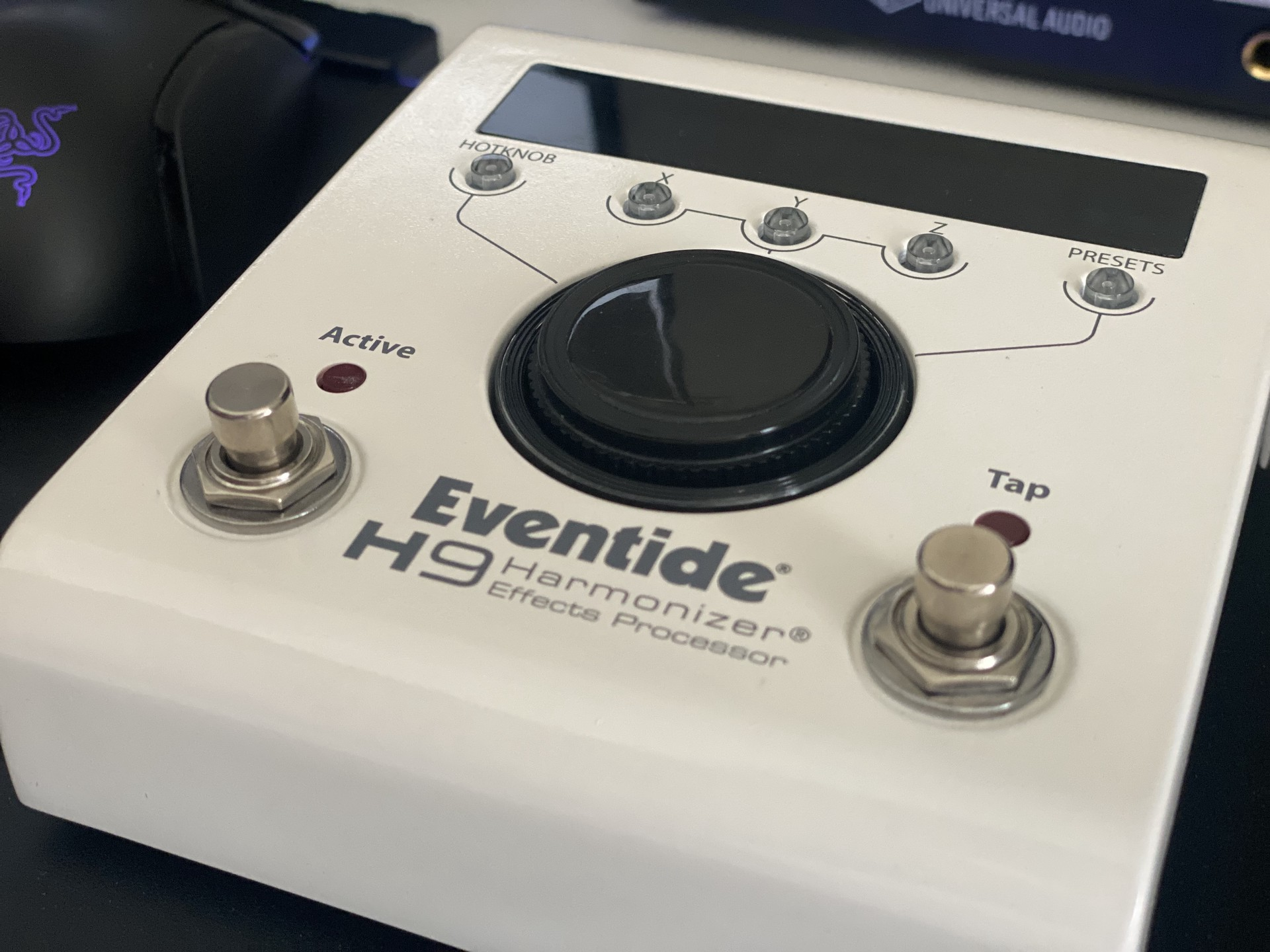
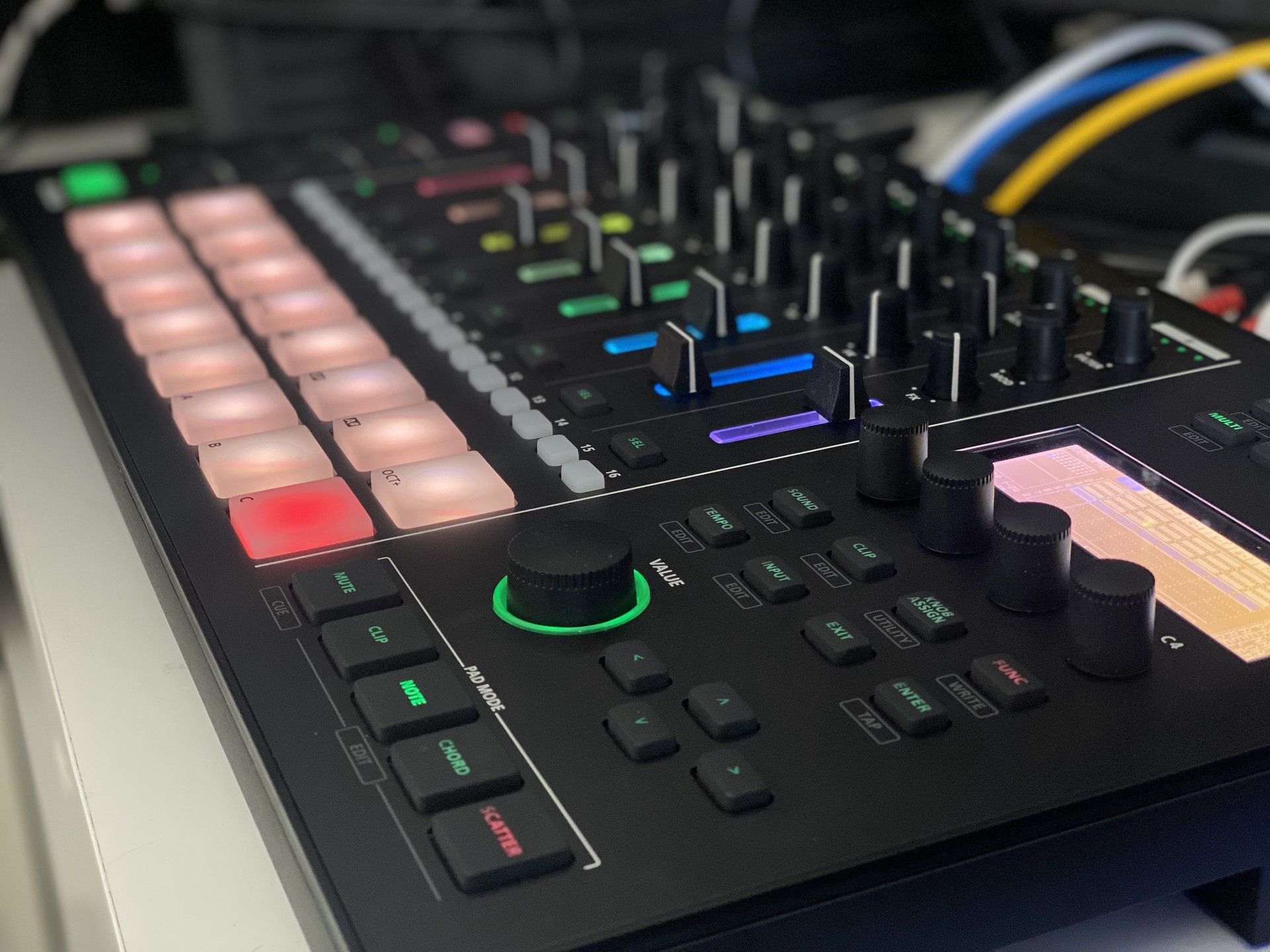
Eventide H9 | Roland MC-707
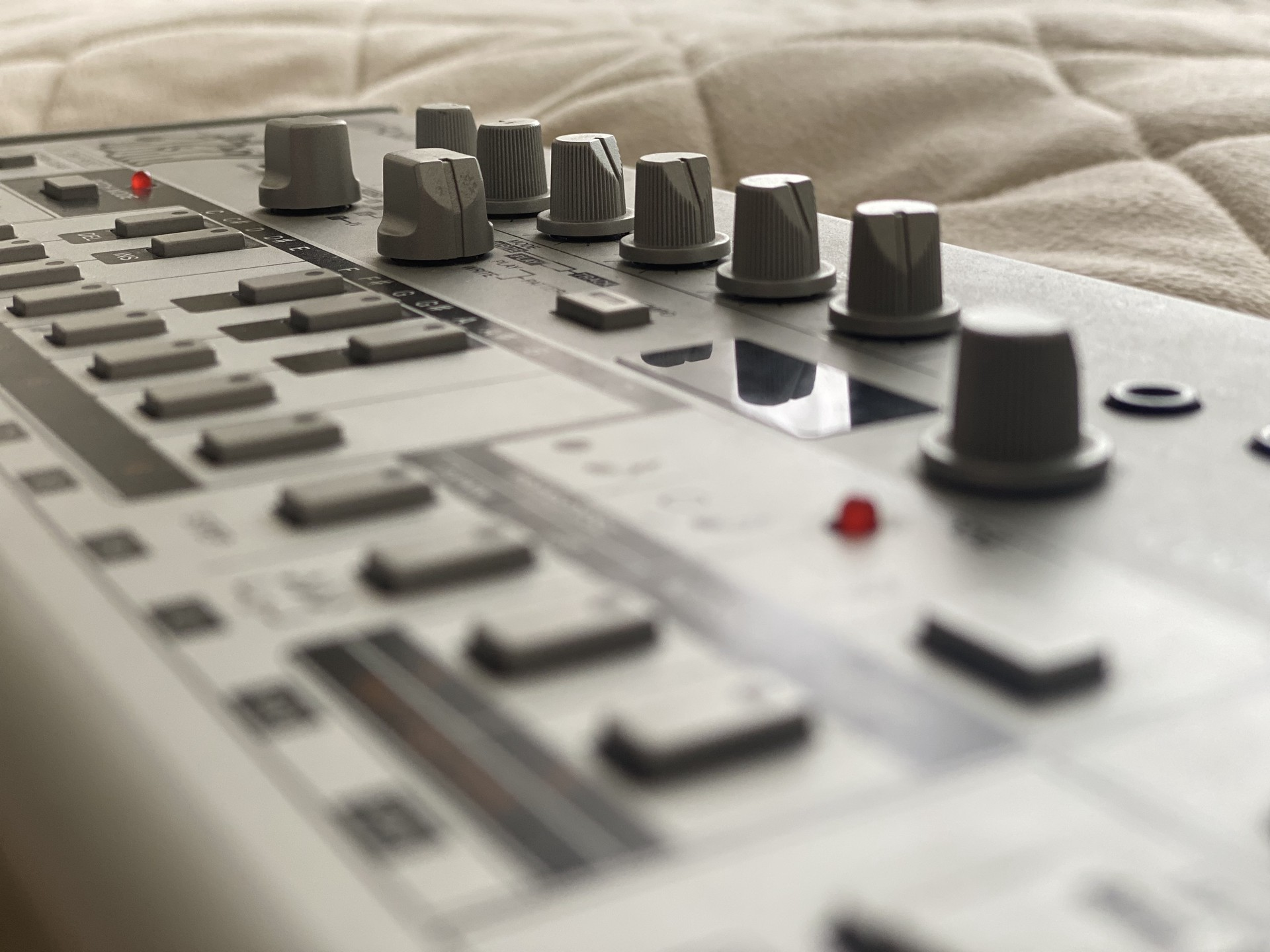
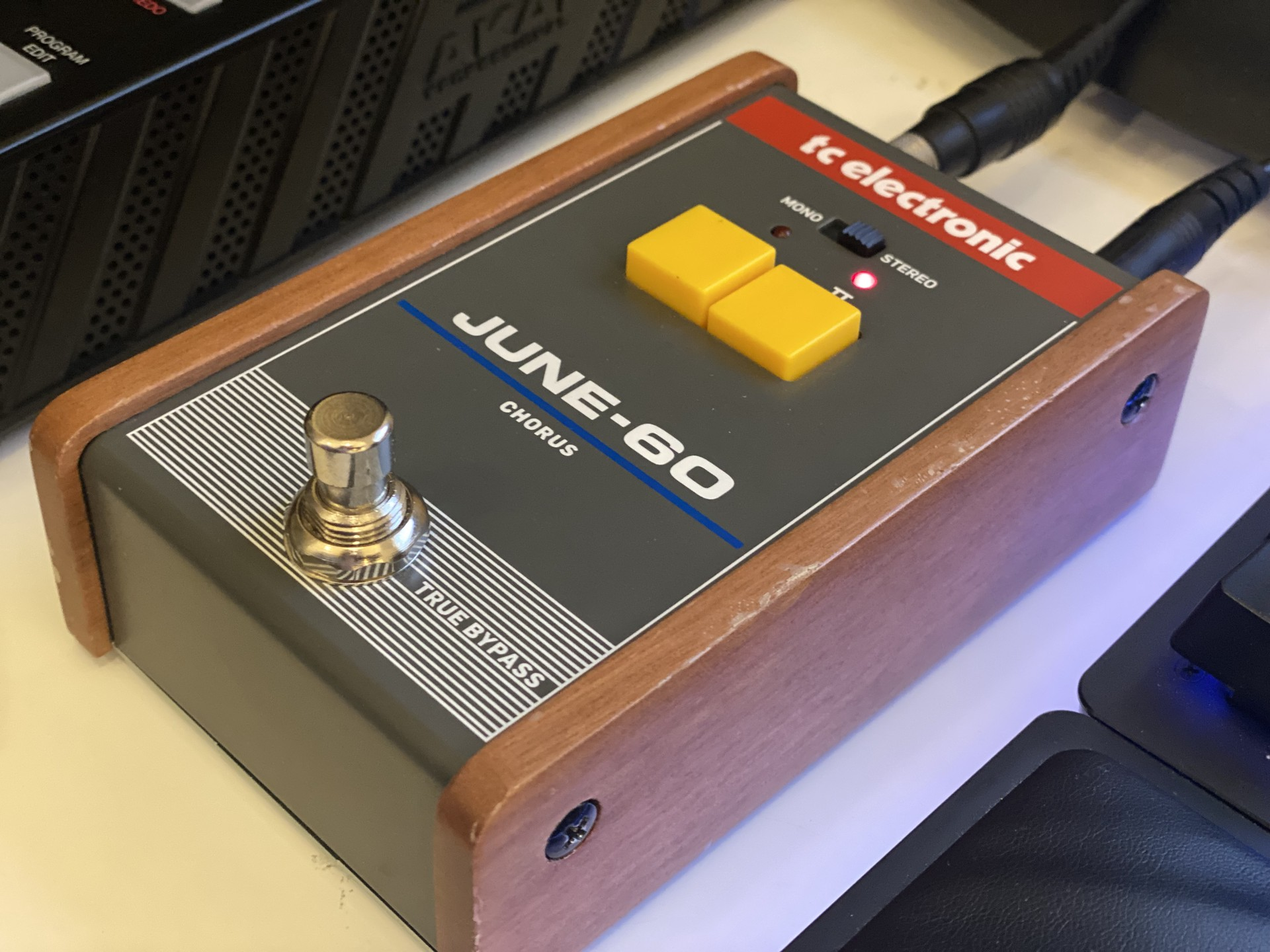
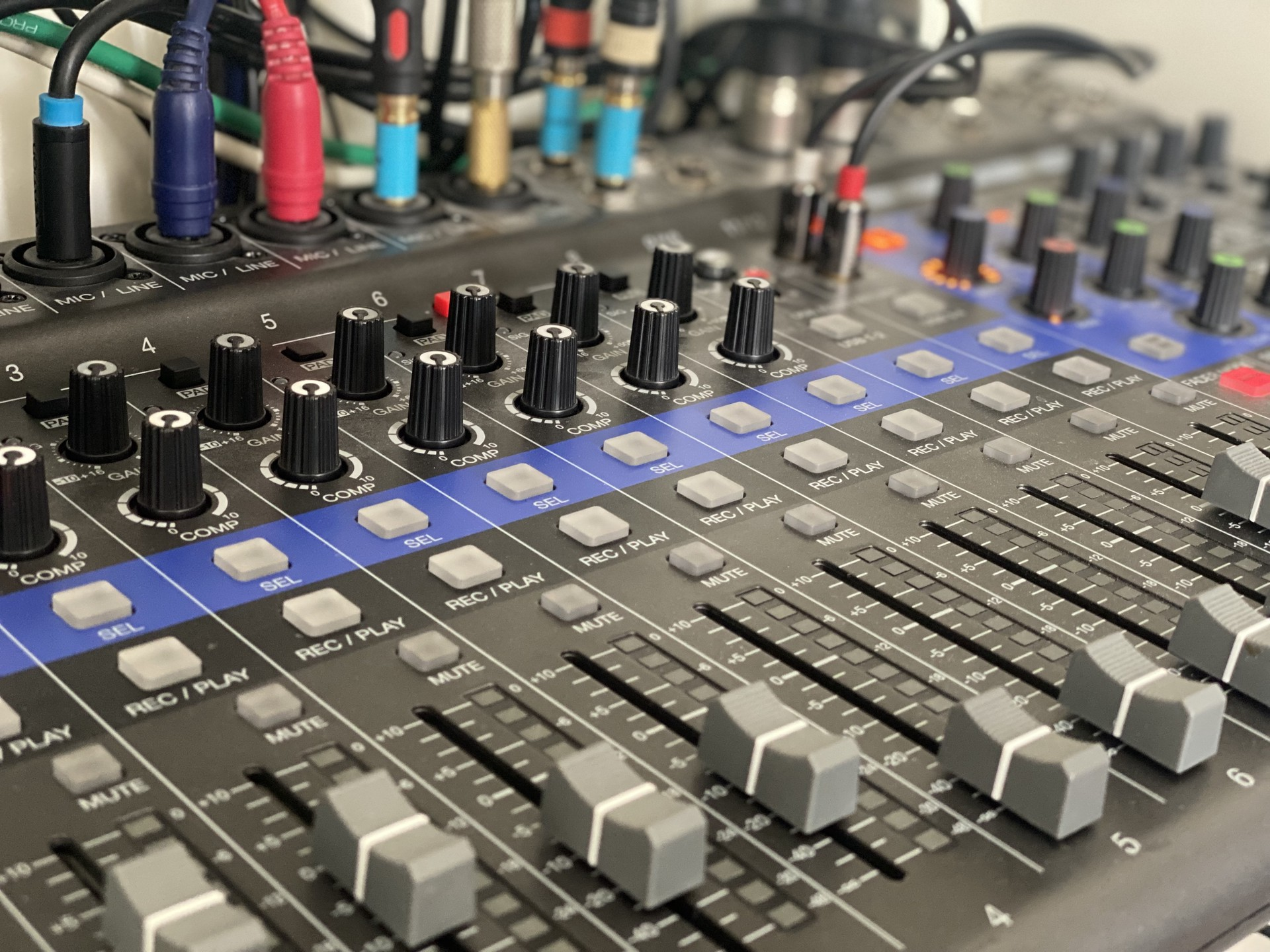
Roland TB-03 | TC Electronic June-60 | Zoom L-12
Our music creation toolkit
Most of the soundtrack was written in Ableton Live, later we switched to Bitwig Studio for its higher stability and flexibility. Bitwig has very flexible routing options, it’s possible to add many modulators to any parameters of built-in and third-party tools, and it’s easy to build your own tools and effects in Grid’s modular mode.
We’ve mostly used UVI Falcon plug-in — this is a powerful multi-tool that allows you to combine all possible music combination types. It’s very expensive and heavy, but really worth the cost as it can replace many other plug-ins. Moreover, it now offers a subscription. We often use it, not only for music, but also for game sound design, for example, shots and footsteps. We also often use Native Instruments products, like the good old Massive, FM8 and the great Reaktor. And the more modern Pigments, Spire and Serum are no worse.
For audio mixing we use the UAD, Slate Digital, Fabfilter, Eventide and Waves packages. A large number of drones, pads and reverbs create unpleasant resonances, so the Soothe plug-in comes to the rescue, gently cleaning them out automatically.
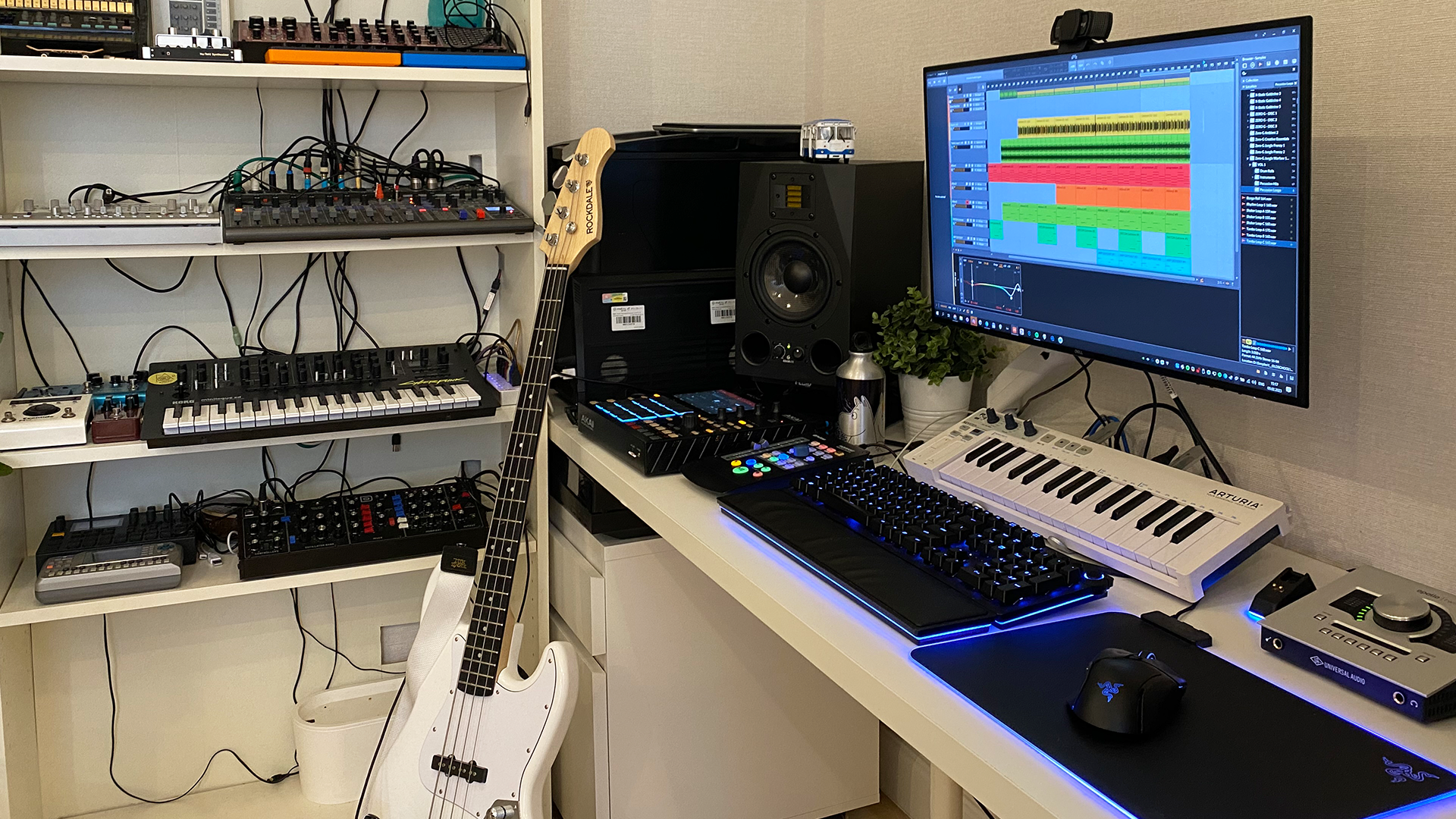
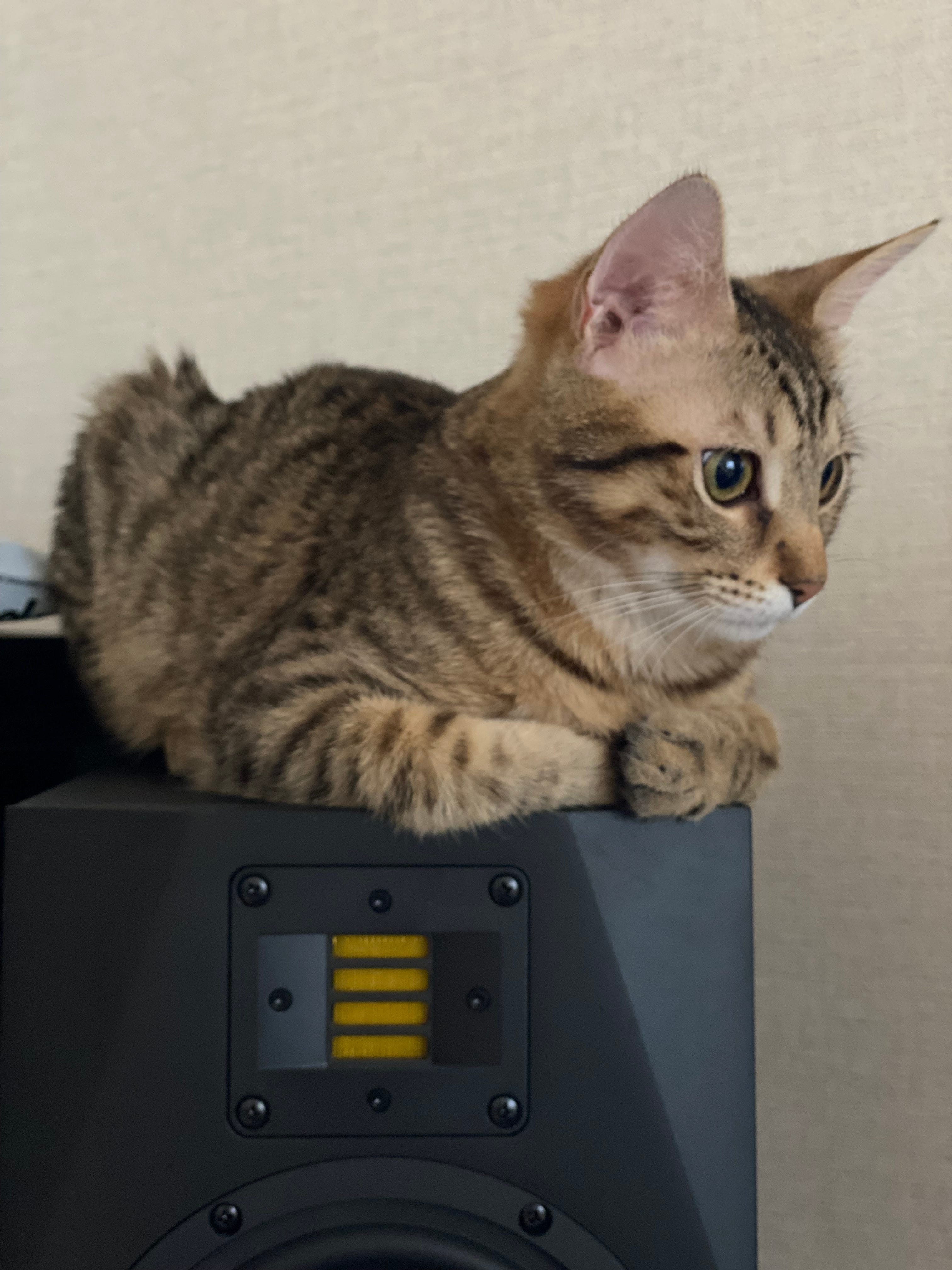
Everything that helps me create music
At the final stage, I often use my favorite, but little-known “goodizer” — Nomad Factory Cosmos. This is an old, inexpensive, yet very convenient and nice-sounding plug-in.
Another ingenious combination is the open-source tool PaulXStretch and the Valhalla Shimmer and Eventide Blackhole effects. This set allows you to get drone from almost any melodic sample and endlessly change it manually or with the help of modulators. This video shows the process in more detail, it’s really very simple and impressive. Instead of these tools, you could also use other analogues like any granular sampler along with pitch delay and reverb with a very long tail in 100% wet mode.
We also have often used a similar external set up: the Strymon BlueSky and Eventide H9 pedals with a guitar or a microphone connected, and the kalimba, panflute and other instruments recorded into this mic (modified beyond recognition) or an iPad with the Samplr application. The latter is a very interesting granular tool that I’ve been using for over a decade.
A few more example tracks
We’ve sometimes used interesting field recordings, obtained by chance. For example, with the theme for the Dead City map, we used the sound of an air raid siren recorded during an emergency notification system check ten years ago.
Dead City map soundtrack
The Power Plant map music has an even more unusual story. Many days in a row I would return home at the same time and a high-speed train would usually pass by with a terribly loud and sharp signal. Once I recorded it on my phone in slow motion: its signal sounds were incredibly powerful and creepy, I couldn’t help but use them. The very next day I put it on the recorder, slowed it down again and got the sounds of the Apocalypse trumpets.
Powerplant map sountrack
For one of our events, we created a map with sakura blossoms and a chillout track with Asian motifs. The players liked the music so much that we decided to record an hour long lo-fi chillout mix of such tracks. It was also very atypical for our game!
Let’s wrap things up with some advice based on our mistakes. You’re sure to find your fair portion of bumps and bruises, it’s being an inherent part of the process, but anyway, perhaps some of these can help:
- Don’t start working on sounds and music too late. The main infrastructure for audio should be planned as soon as at the prototype stage.
- Don’t rely entirely on outsourcers, especially those who just make assets. Hire a dedicated person, or work with a team that is directly involved in the development and implements the sound.
- Don’t underestimate the importance of sound and music, especially in mobile games. This is an important part of the look and feel of the game, which directly affects the overall evaluation of the product.


.png)